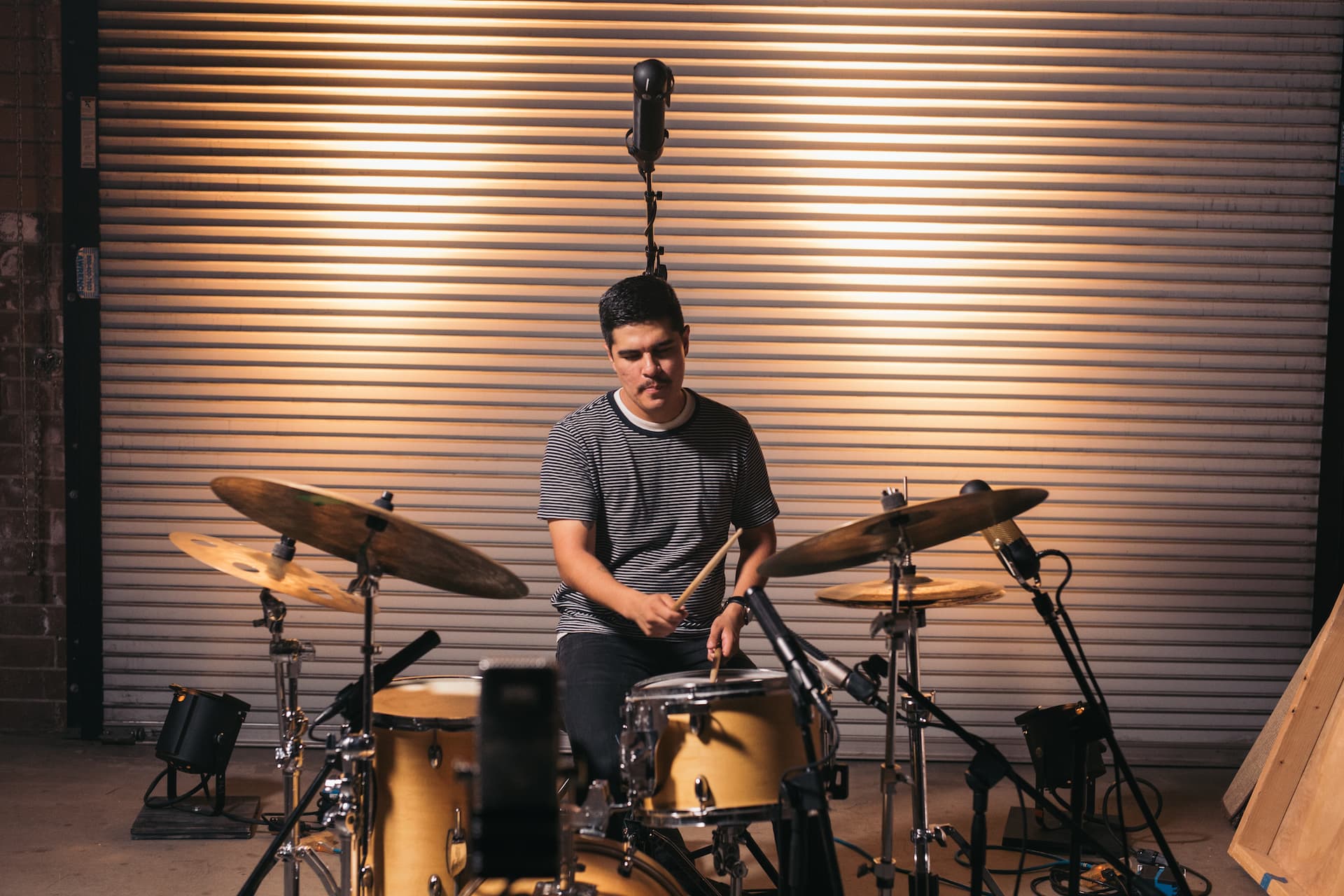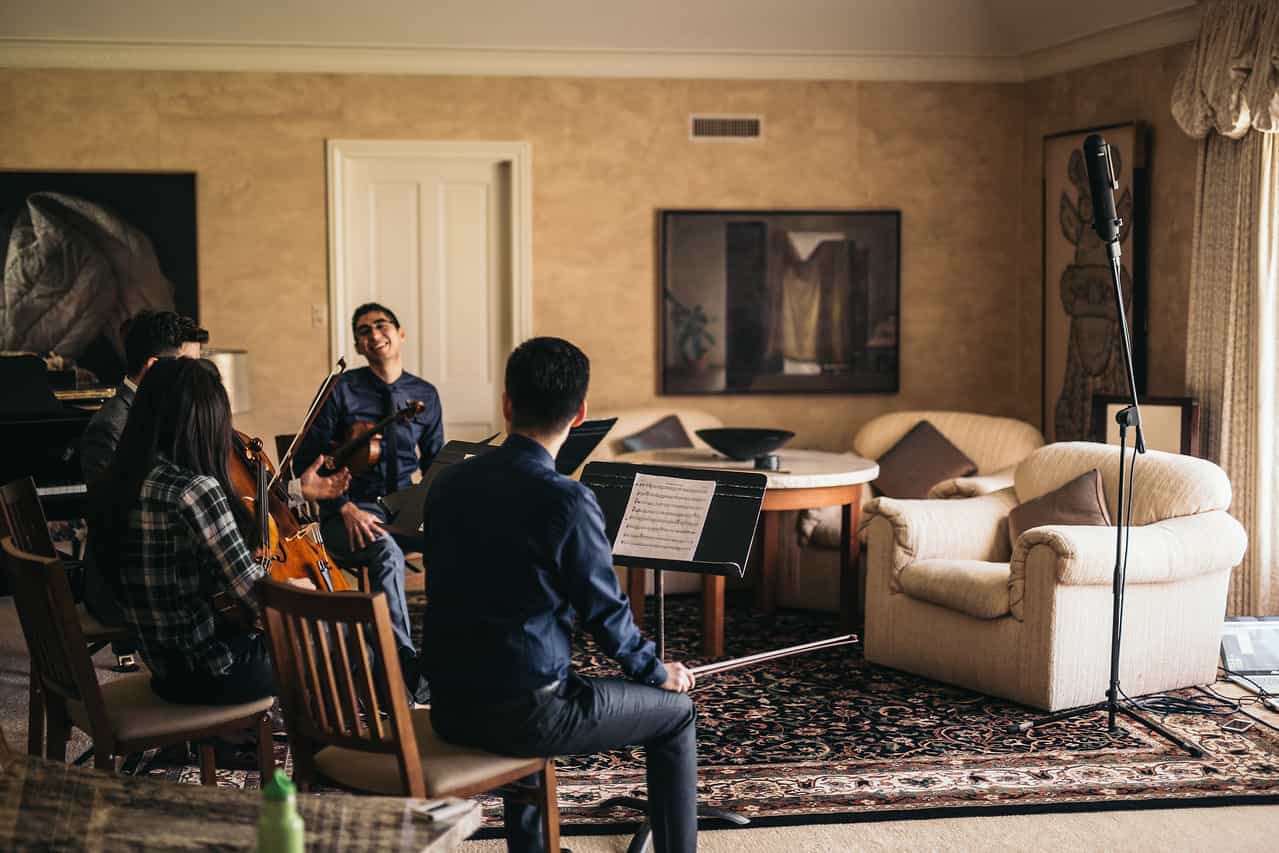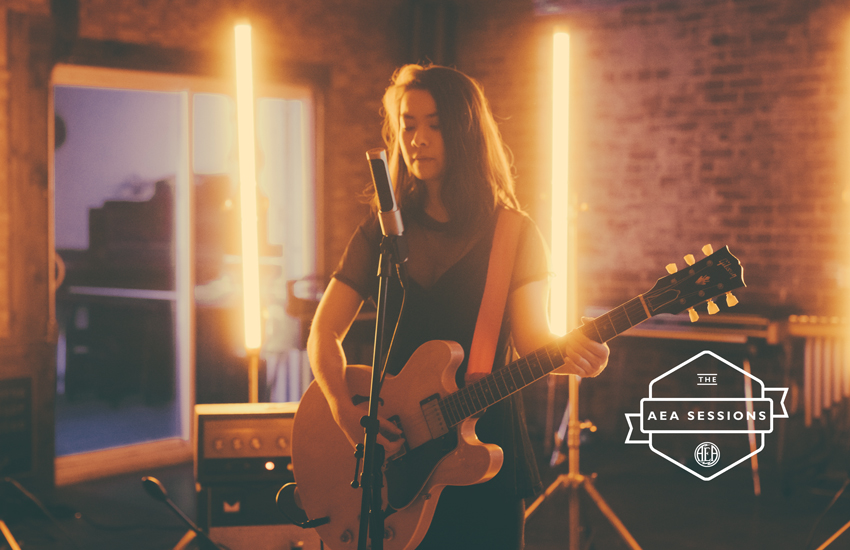
R88 Series
R88 Series ribbon mics capture sound as your ears hear it, with an honest and open tonality. The R88 and R88A effortlessly record complex sources like drums, strings, piano, and other instruments that produce intricate transients, harsher highs, and bellowing lows.
where to buy
R88 Series Microphone Overview
Features two Big Ribbons™ in a fixed Blumlein and mid-side configuration
Astonishingly open and natural sound
Far-field ribbon mic designed to retain low end and top end at a distance
Stereo version of the AEA N8
Active R88A version has 12dB level increase and is optimized for all preamps
Made in the U.S.A.

A Stereo Microphone Like Your Own Ears

The stereo R88 captures a space as it sounds live and in person, with all the present subtlety and nuance. Its expansive frequency response and balanced low end make it superbly effective when capturing the full breadth of sound from the back of a room or above a drum set.
Alongside the mono AEA N8, it boasts the widest frequency range of any mic in the AEA lineup and effortlessly manages more complex source audio like drums, strings, piano, and other instruments that produce intricate transients, harsher highs, and bellowing lows. The Blumlein configuration of the ribbons allows for a sweeping range of perspective, so an entire ensemble and room can be captured by the R88 alone.
The R88A retains the same sonic character of the R88 but offers an additional 12dB of output and a stable impedance that allows flexibility when recording quiet sources through any preamp.



The Engineer’s Secret Weapon
R88 Series mics are an engineer’s secret weapon, offering a level of detail and balance in recording like no other microphone available. Packaged in a sleek, 2.6 pound black shell designed for quick setup, it’s an excellent choice for remote recording.
Particularly well suited for the rock, roots, classical, Americana and jazz genres, R88 Series microphones have such versatility that engineers like John Cuniberti use it as their one mic to capture an entire band performing live in the same room. There is a reason that legendary Blackbird Studios in Nashville owns five R88s.

Hear the R88 Series
Audio Examples & Techniques
A Rich History
The design of the R88 Series borrows from serious stereo recording tradition. In 1931, EMI engineer Alan Blumlein invented stereo recording by demonstrating the natural reproduction of the soundstage in one of the Abbey Road studios in London.
Today, Blumlein’s XY coincident recording technique lives on in the AEA R88 Series, which uses two figure-of-8 ribbons for producing an authentic representation of a performance. The pair of elements are angled in perfect phase at 90 degrees and mounted in close proximity to each other along the vertical axis of the microphone.
As an alternative to Blumlein’s technique, the microphone can also be used for mid-side (MS) stereo, providing excellent mono compatibility and full control over the width of the stereo image.
Either way, the R88 Series is so easy to use that any recording novice can do it. Simply choose where to place the mic and hit record. It’s that easy.
The R88 Series In Action
John Cuniberti's OneMic Series
Watch San Geronimo perform “Pay Day” around a single R88
A Far-field Ribbon for Creative Recording
As a stereo far-field ribbon microphone, the R88 Series was designed to capture balanced sound from long distances. Sound sources should be measured in feet rather than inches away from the mic. From 16 inches to 20 feet, the mic retains its full spectrum and incredible low end. When positioned closer than 16 inches, the mic adds proximity effect. When carefully used, this proximity effect can beef up thin sounds — either voices or instruments.
Don’t worry about loud sources, either. The R88 Series can handle 165+ dB SPL at 1 kHz allowing you to position it up-close to avoid room tone if needed. It will not be hurt by loud sources and can be positioned against a stereo guitar amp and other loud instruments.

The R88A: An Active Version
For those without access to an ideal preamp, AEA offers the Active R88A, a premium version of the R88 complete with JFET electronics and the same custom transformer used in our active R44. It’s basically an R88 with a built-in preamp.


The extra 12db of output is vital when recording quiet sources like vocals or soft acoustic guitars. The active circuitry also prevents noise interference on long cable runs or when operating near large lighting rigs. The R88A’s active circuitry requires standard 48-volt phantom power to operate. The premium R88A is visually distinguished by a red cable at its base.
Which Model Is Right For Me?
The R88 and R88A are almost identical in sound.The R88A is an R88, but equipped with custom-made Lehle transformer and active electronics. Though the two versions of the microphone sound very similar and both deliver the classic ribbon sound, they have different requirements. The choice between the R88 and R88A is contingent on the specific needs of an engineer and their environment.
Yes, There’s a Matching Preamp
Since the R88mk2 is a dual passive ribbon microphone, the preamp is critical for optimum performance. Preamp gain should be at least +60dB or higher and the preamp should have a very high impedance. It’s the same requirement with all passive ribbon mics.
To guarantee consistent, full-range ribbon sound, we recommend AEA’s RPQ3, RPQ500, TRP500, and TRP3 preamps, which were specially designed for ribbon microphones. However, preamps with above a 5K ohm impedance found in many live soundboards are adequate for guitar amps and other louder instruments. On quiet sound sources or for distance recording, an AEA preamp is highly recommended.
Artists
The AEA R88 has been an important part of my drum recording technique for the 6 years or more. It’s been on every session from Alanis Morissette to Jason Mraz and from The Strokes to The White Stripes. It handles high levels well. It’s tone is warm but with with great detail and takes well to heavy processing. I wouldn’t be without it on a tracking session
Mix
The R88 sounded absolutely delicious on upright bass, delivering a round, warm, fat bottom without being tubby. The roll-off on the top of the R88 fit perfectly with this instrument, making it sit nicely in the mix. The mic nicely rounds the attack consistently up the neck, providing great definition. On playback, the upright player was astonished at the sound.
Sound On Sound
This is a very impressive microphone and one which is without equal as far as I know. It will appeal to the purist classical-music engineer without doubt, but it also has a much wider role in the studio. Long live the ribbon revolution!
Tape Op
I've also had great success using the combo on a horn section 15 ft from the drum kit. Recording two Ampeg Gemini guitar amps in stereo was totally killer. On piano, I was able to use the placement and nulls to effectively control the bleed and frequency response of a baby grand track. As a room mic for percussion ensemble overdubs, for backing vocals, etc. - all amazing.
Manual and Specifications
Parts and Accessories
AccessoriesRelated


- Tricks of the Trade
Near-Field vs. Far-Field Ribbon Mics: What’s The Difference

- Tricks of the Trade
Blumlein vs Spaced Pairs on Drum Overheads: How to Choose

- Ribbon Recap
What is the Blumlein Technique?

- Tricks of the Trade
Studio Secrets Unveiled: The R88 Stereo Microphone




